What Devices Do You Need for the Ultimate Smart Home?
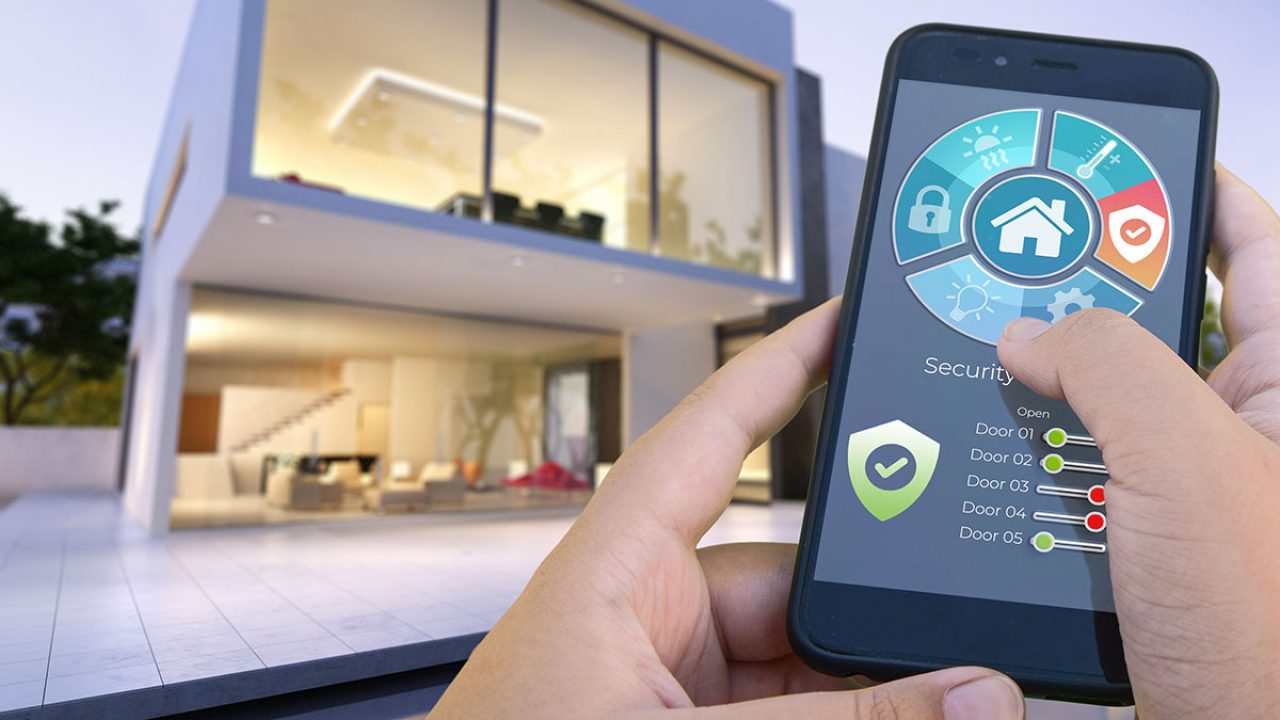
Smart homes were long considered a niche idea, reserved mostly for wealthy individuals who invest in custom-built houses or condos.
As time and technology have advanced, the concept of a cutting-edge home equipped with smart devices has become a reality for many homeowners. Today, you can turn your abode into a smart home using a number of select devices.
Setting up a smart home might look like a complex task, even with the available options. This article will tell you about the essential devices needed to turn your house into a smart home. We’ll also go through some crucial considerations when putting together your smart system.
The Smart Speaker – The Heart of Your System
If you intend to use your smart home system via voice commands, you’ll need to get a smart speaker. These speakers connect with your virtual assistant (VA) and provide control over other devices.
You can choose from a variety of styles for smart speakers or even opt for a smart display. These essentially do the same thing as speakers with the addition of a screen. Getting a smart display means you can also view security camera feeds or watch videos. At the same time, you are able to issue commands to the device in the same way as with a smart speaker.
There’s a significant setback when it comes to smart speakers. All of them function exclusively through the VA, and most are dedicated to working with a single brand. In other words, you can get a smart speaker with full support for Amazon Alexa, but it won’t work with Apple’s Siri.
You should pay attention to a number of things when choosing the right smart speaker for your home. The aforementioned virtual assistant is undoubtedly among the most important features, and your choice will largely depend on what you intend to use it for.
Alexa is, of course, connected to Amazon’s e-commerce services. This makes the VA particularly handy if you want the convenience of ordering online with voice commands. Furthermore, Amazon occasionally features special deals geared toward voice orders. If you decide to buy Amazon’s own smart speakers, it’s possible to extend their functionality with third-party plugins.
Google Assistant uses the immense knowledge database of its parent company. If you want a VA that can answer most questions in an instant, this is the best choice for you. The sheer versatility, as well as Android and Chromecast support, will put Google Assistant at the top of many lists.
Siri is the ultimate choice for people who primarily use iOS devices. Apple’s VA has full support for the essential iPhone and iPad functions. While both Alexa and Google Assistant can still outperform Siri in terms of voice search, it’s worth noting that Apple’s AI is receiving constant improvements. Another limiting factor when it comes to using Siri is that the support for the VA is available only on Apple’s smart speakers.
Looking beyond your choice of smart speaker brand and, by extension, the virtual assistant you’ll use, you’ll need to consider the audio quality.
This aspect will be paramount for devices that function through sound. Naturally, the audio quality will become especially pronounced if you want to command your smart speaker to play music. In most cases, you’ll have plenty to choose from on this front. It would be best to opt for stereo rather than mono speakers for music listening as the vast majority of tracks you can play today are intended for a minimum of two channels.
Next, there are the questions of power supply and portability. If you want to be able to move your smart speaker from room to room, you’ll need a relatively small and light model. You’ll also want one that doesn’t solely require a constant power supply from an outlet but can function with batteries.
Portability will influence your choice in terms of how much you want to move the speaker around. If you intend to keep it in one place, you might decide on a larger speaker with better sound quality. If you want to take your smart speaker outside once in a while, a smaller variant would be ideal.
Finally, you should learn which smart speakers work best with other devices. While smart speakers are intended for nearly universal use, they’ll still be at their best when paired with the most compatible devices. The same applies to apps and other software.
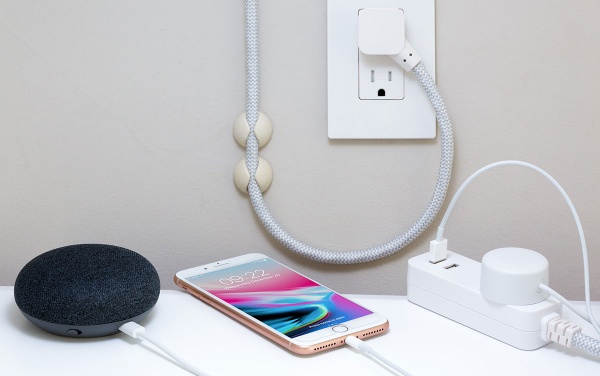
Smart Plugs – The Next Essential Step
For many users, introducing smart plugs will be the point where their home becomes a smart one.
Smart plugs are made to the same standards as the everyday electrical plug. These devices are plugged into an outlet and transfer the power supply to any device plugged into them.
A smart plug usually connects to your system via Wi-Fi. From there, it can be controlled either through a smart speaker or your phone. You can turn the plug on or off, set timers, and even monitor power usage for each individual device.
Some smart plugs come with extended functionality. For instance, they can be adjusted to eliminate any latent power consumption (vampire power) when a device running through a smart plug is turned off.
You can use a smart plug indoors or outdoors, which further extends its possibilities. With enough smart plugs placed in key outlets, it’s possible to control everything in your home, from the phone charger to the front yard lights.
In terms of safety, smart plugs perform just as well, if not better than, regular ones. As mentioned, smart plugs are made to the same standards, with some models exceeding the minimum standards.
Many smart plugs come with auto-shutoff to protect devices from power surges. Using extension cords, splitters, and similar devices in combination with smart plugs isn’t recommended.
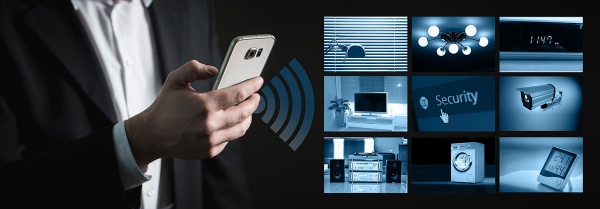
Smart Security – Outwit Potential Intruders
When talking about smart home systems, there’s no brighter idea than leveraging tech solutions to make your household more secure.
You can find a smart variant of pretty much every security gadget, from sensors and cameras to lights and locks. Once you hook these components into the system, your home will become a technological fortress.
Starting with sensors, there are several kinds worth installing in your home: window, door, glass-break, motion, water, carbon monoxide, and smoke sensors. Some of these function via magnets, such as window and door sensors. Others, like glass-break sensors, use microphones to measure changes in sound, while motion sensors work with the help of lasers and infrared.
Smart carbon monoxide and smoke detectors function the same way as the regular variants. The difference is that smart devices automatically send out an alert to your system.
With the essential sensors in place, you can rest assured no unwelcome guests can move through your home without you being notified. Best of all, you can be away from home and the smart system will notify you if anything happens.
Cameras are the next crucial part of the home security puzzle. Many potential wrongdoers are deterred by the very sight of a camera, which is why so many dummy models are sold.
When it comes to real security cameras, you can opt for continuous, motion-activated, or programmable models. The first two types don’t require a detailed description—how they work is in the very name. But programmable cameras go a step beyond recording security footage.
Certain cameras are made for seamless integration with smart home systems. They can be programmed and configured to record at scheduled intervals, send a livestream to your mobile device, or alert you of unexpected movement.
It’s also possible to install a smart doorbell as an extension of the camera setup. Smart doorbells have a built-in camera to capture anyone approaching the door in high-detail image. Furthermore, these doorbells are most often equipped with a speaker and microphone set, allowing you to speak with visitors—welcome or otherwise.
As an excellent addition to your home’s first line of defense, you can replace the old door lock with a smart variant. Smart locks automate door locking and unlocking and can send out notifications whenever they’re tampered with. Plus, a good smart lock can be integrated with other components of your security system, expanding overall functionality.
There’s one more gadget that can turn intruders away: smart floodlights. Besides having motion detection, smart floodlights feature extremely bright LED lights, and in some cases, sirens. They can be scheduled to be active at specified periods, set up to monitor custom zones, and controlled via your mobile phone.
Of course, your home isn’t in danger only from criminals. Gas and water leaks, as well as fires, can be a risk factor too.
To that end, you can install smart detectors to notify you of sudden problems. When it comes to water leak detectors, these can save you a lot of trouble. A smart water leak detector can be integrated with other smart devices, such as valves, shutting the water down as soon as a leak is detected.
Smart detectors will send you an alert the moment something goes wrong. At that point, you can contact an emergency service to take care of the issue.
That’s where the last item on the smart home security list comes in—the panic button. If there’s no time to make a call, you can press the button, and it will send out a distress signal to the predefined services. The best thing about panic buttons is that they can be mounted on a wall as a physical item or function through your smartphone.
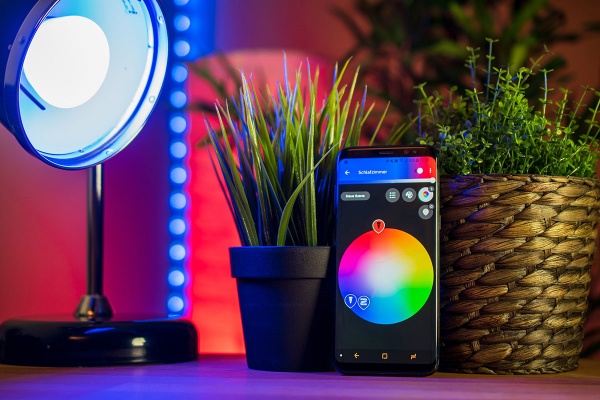
Smart Lights – Never Touch a Switch Again
There have been many advances in light bulbs since they were invented. The materials have changed, and different types of bulbs were invented. However, the way we use lights has stayed pretty much the same for the past century.
You need to walk up to the switch and flip it on or off. (Or clap, if you have The Clapper.)
This might not sound like a huge deal at first, but that’s only if you never had more than a handful of lights in your home. And we all love our houses well-lit.
The issue with light switches is that they aren’t particularly convenient. They have to be placed strategically at accessible points and are most often located at one corner of the room. If your home features many rooms and two or more floors, this inevitably leads to some lights being left on unintentionally. They’re also a magnet for germs and grime.
As a result, you might be wasting energy and shortening the lifespan of your bulbs. At the same time, manipulating the lights stays as inconvenient as it ever was, and, in most cases, you can’t control the light output.
Smart lights are the ideal solution to all these problems.
When you install smart bulbs or light fixtures, the entire lighting in your home becomes controllable and customizable from your phone or smart speaker. The LED lights are equipped with software allowing them to connect to your system.
But the benefits of smart lighting go beyond turning lights on or off without switches.
In terms of energy consumption, smart lights can help reduce your electricity bill considerably. You can program the lights to turn off at a designated time and dim them using a dedicated app or your virtual assistant.
Additionally, LED lights are much more long-lasting than conventional bulbs. This means they require less frequent replacements, reducing your annual expenses and waste production.
The automation features can play a role in home security as well. Since smart lights are programmable, you can set them up to activate at set intervals every day. The lights will give the appearance of a full house even when you’re away.
Some smart lights also have advanced lighting features, such as controlling the light warmth and color. This aesthetic function can quickly change the way your home looks without you touching a single part of it.
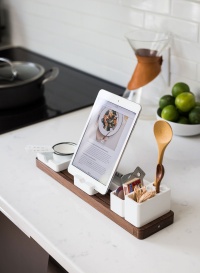
Smart Kitchen – Cooking With Tech
The kitchen is a central location in many homes. Modern kitchens aren’t only places for cooking but also represent a space to hang out with family and friends.
If you’ve set up the essential smart systems in your home, your kitchen will likely already feature smart plugs and lights, but that’s only the beginning.
The number of kitchen items that have smart variants is impressive. You can set up a smart oven, refrigerator, microwave, gas controls, and even a voice-controlled trash can.
When it comes to convenience and safety, smart gas control is undoubtedly the most important piece of tech. It’s a relatively small addition to your kitchen, but it can make a world of difference in everyday life.
With a smart gas system, you won’t have to wonder if you’ve left the gas on before leaving for a trip or vacation. The system will shut it off for you automatically.
Next, a smart fridge can ensure you always have a clear overview of your food storage. Some fridges have a display on the door where you can keep track of how many items are inside and whether it’s time to replenish. In other words, you’ll never again get up in the morning only to find there’s no milk or juice—the fridge will literally spell it out for you the day before.
Modern refrigerators have individual temperature settings for different compartments. Of course, this feature comes with smart fridges too. The appliance will keep drinks cool while not freezing your vegetables.
Once you have your gas regulated and groceries stored properly, it will be time to prepare a meal. And with a smart oven and microwave, the process is seamless.
These appliances can be set up remotely, preheated, and fed specific recipes to adjust automatically. Essentially, you’ll only need to measure the raw ingredients, put them in a pot, and place the pot in your smart cooking station. Your smart kitchen will take care of the temperature and cooking time on its own.
Once you’ve had your delicious, smartly-made meal, you can get rid of any leftovers without touching the trash can, if you have a smart variant, that is. As soon as the sensor picks up your movement, the lid will open by itself.
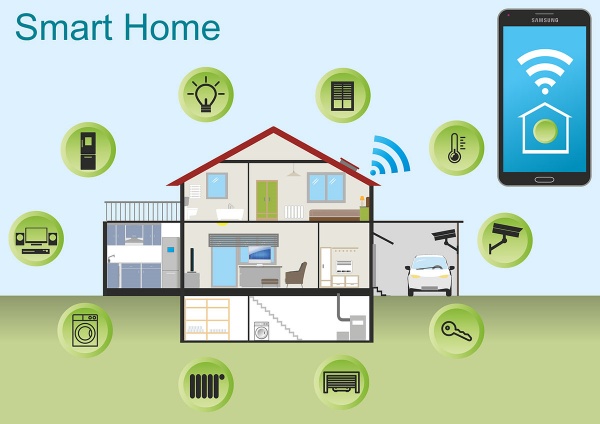
Get Ready to Live Smart
Having a smart home can be an amazing experience. Your home can become a haven of convenience, practicality, and beauty, accessible at the touch of your hand or the sound of your voice.
While tech enthusiasts will be happy to start making their homes smart from top to bottom, a complete rework might be out of reach for those with a limited budget. Even if you can’t introduce all the available devices and gadgets into your home today, certain solutions might be well worth the cost.
Smart technologies can make every home safer, both from external and internal risks. In that sense, investing in such devices should be considered a priority.











